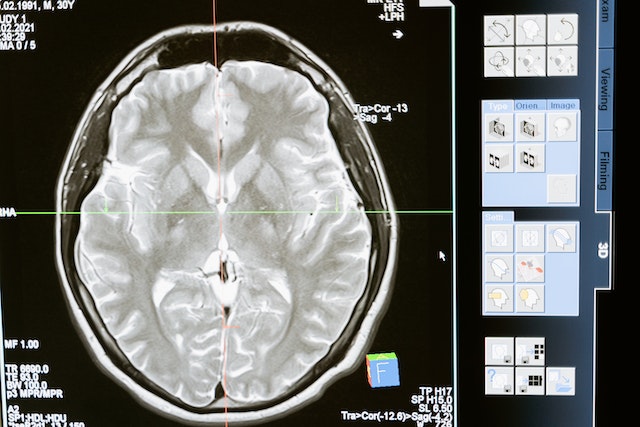The advancement of our knowledge of the brain and the intricacies of the human nervous system is significantly aided by study in neuroscience. The area has seen a revolution in recent years due to technical improvements, allowing researchers to explore new boundaries and produce substantial discoveries. Technology has evolved to the point that it is now an invaluable asset in neuroscience labs all around the globe. This includes cutting-edge imaging methods as well as powerful data processing tools. This article will investigate how technology is assisting neuroscience research laboratories in discovering the secrets of the human brain.
The Role of Technology in Neuroscience Laboratories
Advanced Brainwave Analysis Technologies
Technology is revolutionizing neuroscience research labs, offering advanced brainwave analysis technologies that unlock unprecedented insights into the intricacies of the human mind.
From an EEG headset providing non-invasive and portable brainwave monitoring to magnetoencephalography (MEG) offering high temporal resolution measurement of magnetic fields generated by neural activity, these cutting-edge devices enhance researchers’ ability to study brain processes with remarkable precision.
Functional Magnetic Resonance Imaging (fMRI) and Near-Infrared Spectroscopy (NIRS) provide detailed views of brain activity during various tasks, while Transcranial Magnetic Stimulation (TMS) and Electrocorticography (ECoG) enable direct stimulation and recording of brain signals. This technology-driven revolution fosters new possibilities for understanding the complexities of the brain and advancing neuroscience research.
High-Performance Computing and Data Analysis
Neuroscience research generates massive amounts of data, necessitating fast computer systems and complex data processing techniques. Researchers can quickly and accurately handle and analyze massive datasets with the help of high-performance computing (HPC) clusters and cloud computing resources.
Data-driven methods, computational modeling, and complicated simulations are all made possible by these computer platforms, which are used to investigate brain function. They allow scientists to model neural circuits, investigate the causes of brain illnesses, and decode intricate webs of neuronal connections.
Complex datasets can be analyzed with the help of sophisticated data analysis tools like machine learning algorithms and data visualization software. Making possible individualized therapy and focused therapies, these instruments aid in detecting biomarkers, categorizing brain states, and predicting illness consequences.
Optogenetics and Neural Stimulation Techniques
Technology has also transformed neurostimulation, allowing for more precise manipulation and control of brain activity. In particular, optogenetics has become an invaluable resource for studying the neural circuitry of the brain and the causes of neurological illnesses.
The field of optogenetics focuses on engineering neurons to produce proteins that can detect and respond to light. This is a useful tool for studying brain networks and their function in behavior and illness since researchers can selectively stimulate or inhibit the activity of individual neurons by shining light on them.
Transcranial magnetic stimulation (TMS) and deep brain stimulation (DBS) are only two examples of other neural stimulation approaches profiting from technological developments. Transcranial magnetic stimulation (TMS) is a non-invasive method of altering brain activity by inducing electrical currents in particular brain areas using magnetic fields. Electrode implantation in the brain to deliver electrical stimulation is the basis of deep brain stimulation (DBS), which is beneficial in treating illnesses including Parkinson’s disease and depression.
Big Data and Collaborative Research
The emergence of big data has revolutionized neuroscientific study. The Human Connectome Project and the BRAIN Initiative are two examples of large-scale collaborative endeavors using technology to gather and distribute massive volumes of brain imaging and genetics data.
These efforts encourage multidisciplinary teams to work together, bringing together specialists in areas as diverse as neurology, computer science, and genetics. By bringing together previously soloed data sets, scientists can get a complete picture of brain anatomy, function, and connection; this, in turn, speeds up discovery and inspires new lines of inquiry.
Additionally, academics from all around the globe have access to vital datasets, analytical tools, and study results because of open-access databases and online repositories. In this way, we can increase scientific transparency, cooperation, and repeatability.
Virtual Reality and Augmented Reality
New methods of studying brain function and behavior in immersive and regulated settings have been made possible by virtual reality (VR) and augmented reality (AR) technology.
Virtual reality enables researchers to manipulate visual and aural inputs with unprecedented precision. This technology allows studying cognitive functions, including perception, attention, and decision-making, in a laboratory setting.
Augmented reality seamlessly blends digital overlays with the real world, offering diverse applications in neuroscience. Augmented reality (AR) has several potential applications in neuroscience, including surgical planning, neurorehabilitation, and intraoperative imaging of brain regions.
Conclusion
As a result of technological advancements, neuroscientists now have access to unparalleled resources for probing the brain’s secrets. New possibilities have emerged for studying brain function and elucidating the intricacies of neurological illnesses because of the development of cutting-edge brain analysis technology, high-performance computation, and sophisticated data processing tools. The study of brain circuitry has been revolutionized by optogenetics, neurostimulation methods, and big data projects, all of which have facilitated interdisciplinary teamwork. The immersive and regulated settings made possible by virtual and augmented reality technology have proven useful in studying cognitive processes and social behavior. Future neuroscience research will likely be shaped by technological breakthroughs, bringing us closer to discovering the brain’s mysteries.

